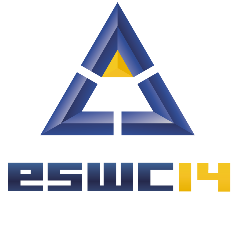Volker Tresp
 Short Bio:
Short Bio:
Volker Tresp is a Principal Research Scientist at Siemens and a professor at the Ludwig Maximilian University of Munich. His main research interests are in Machine Learning and in Statistical Relational Learning, in particular. His team has developed both the Infinite Hidden Relational Model (IHRM) and the tensor-based RESCAL approach for highly scalable relational learning in triple stores. In the last few years he and his team have been applying Statistical Relational Learning to the Semantic Web and to Knowledge Graphs. He was a member in the winning teams of the ISWC 2011 Semantic Web Challenge and of the ESWC 2011 AI Mashup Challenge. He has received his Ph.D. from Yale University in 1989, his M.S. also from Yale, and a diploma in physics from the University of Göttingen.
Website: http://www.dbs.ifi.lmu.de/~tresp/
Machine Learning with Knowledge Graphs
Most successful applications of statistical machine learning focus on response learning or signal-reaction learning where an output is produced as a direct response to an input. An important feature is a quick response time, the basis for, e.g., real-time ad-placement on the Web, real-time address reading in postal automation, or a fast reaction to threats for a biological being. One might argue that knowledge about specific world entities and their relationships is necessary if the complexity of an agent's world increases, for example if an agent needs to function in a complex social community. As one is quite aware in the Semantic Web community, a natural representation of knowledge about entities and their relationships is a directed labeled graph where nodes represent entities and where a labeled link stands for a true fact. A number of successful graph-based knowledge representations, such as DBpedia, YAGO, or the Google Knowledge Graph, have recently been developed and are the basis of applications ranging from the support of search to the realization of question answering systems. Statistical machine learning can play an important role in knowledge graphs as well. By exploiting statistical relational patterns one can predict the likelihood of new facts, find entity clusters and determine if two entities refer to the same real world object. Furthermore, one can analyze new entities and map them to existing entities (recognition) and predict likely relations for the new entity. These learning tasks can elegantly be approached by first transforming the knowledge graph into a 3-way tensor where two of the modes represent the entities in the domain and the third mode represents the relation type. Generalization is achieved by tensor factorization using, e.g., the RESCAL approach. A particular feature of RESCAL is that it exhibits collective learning where information can propagate in the knowledge graph to support a learning task. In the presentation the RESCAL approach will be introduced and applications of RESCAL to different learning and decision tasks will be presented.
The presentation builds to a large degree on the dissertation of Maximilian Nickel, now MIT.























